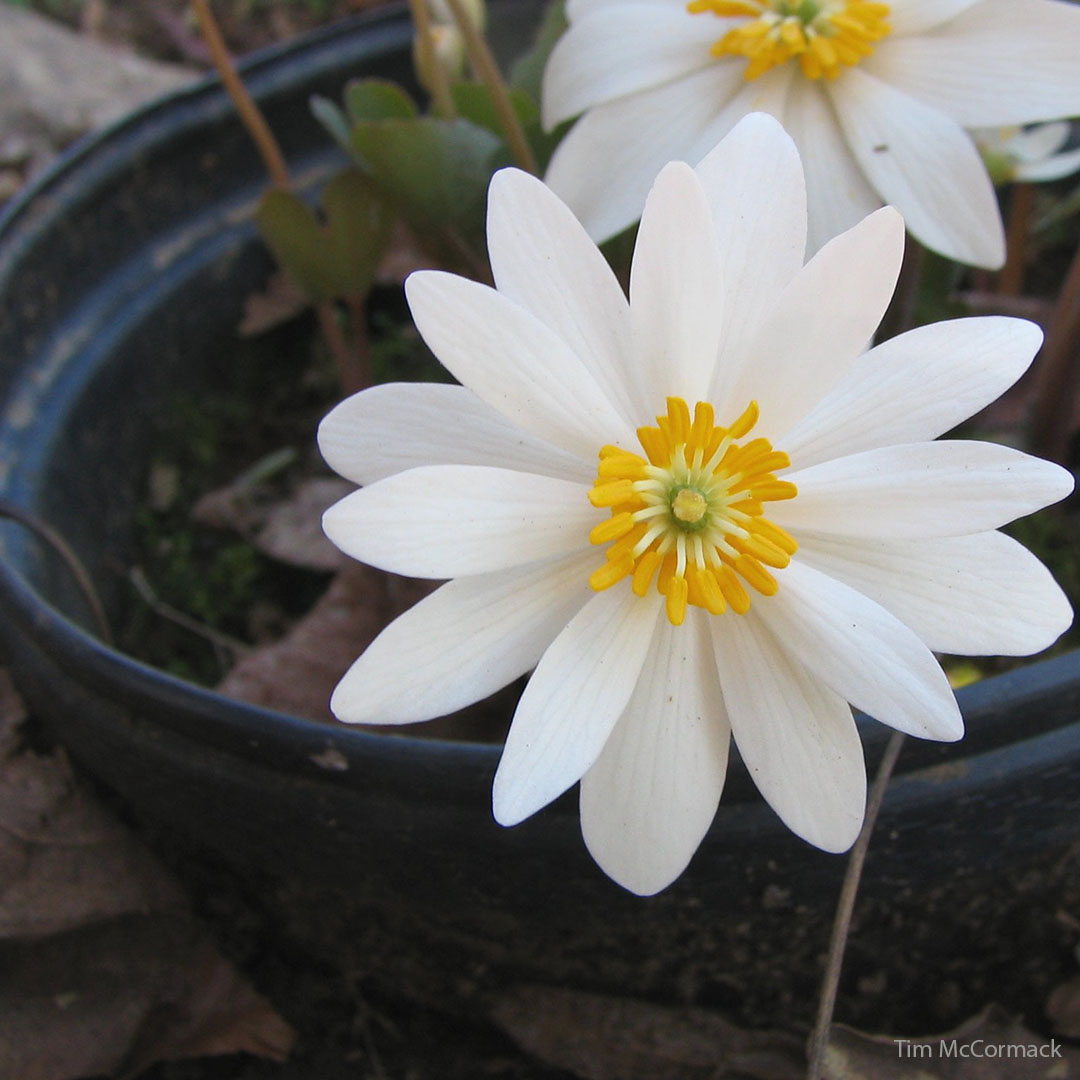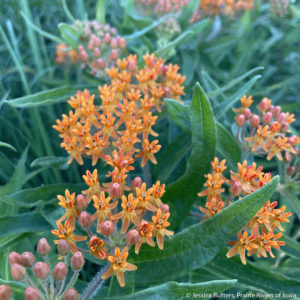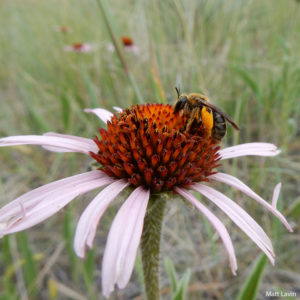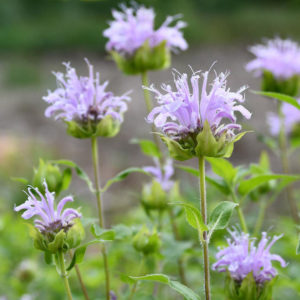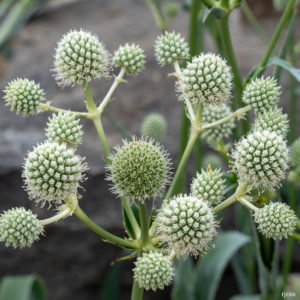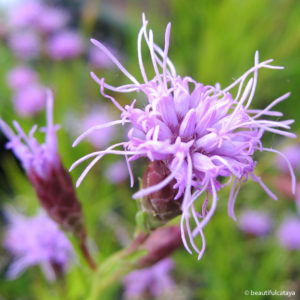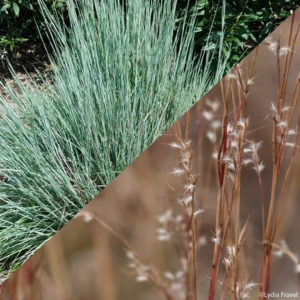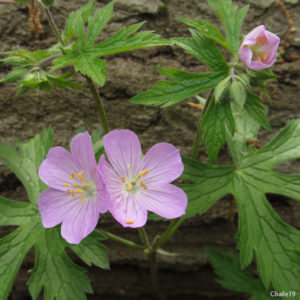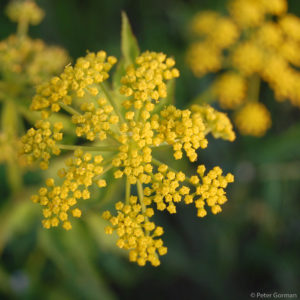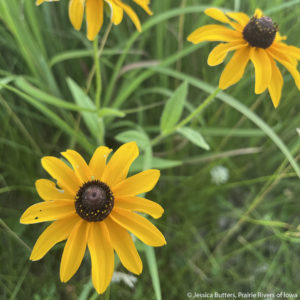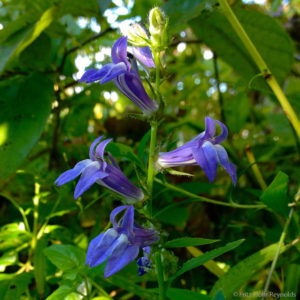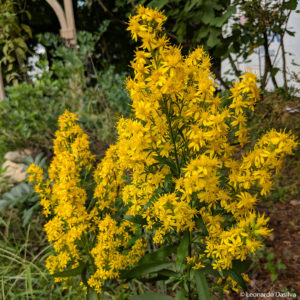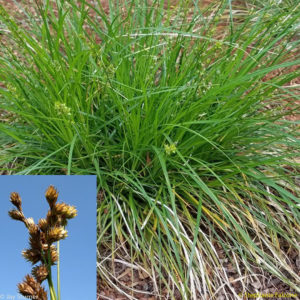How to Support Pollinators with Limited Space
Most pollinator garden guides are for those who have the space, time, and energy to implement a large garden into a backyard or front lawn. Those of us who rent, have small yards, or can’t commit as much time to gardening are normally left out of the conversation – until now! Apartment dwellers and busy homeowners alike have the ability to provide important resources to pollinators through container gardening! Below we outline some reasons why container gardening is important, give some gardening tips, list fantastic native pollinator plants, and provide links to inspiring resources to help turn your porch or balcony into an beautiful pollinator habitat!
The Importance of Container Gardens
Container gardeners fulfill unmet pollinator needs
If you live in a large, uniform area such as a rental complex or a grass-turf suburbia, it is all the more important to provide native habitat! These areas are full of concrete and frequently-mowed grass, making the area inhospitable to most pollinators. By growing a container garden, you contribute an important “stepping stone” for pollinators by providing them with nectar and pollen resources to help them move through your neighborhood.
Balcony gardens are inspiring
Have you ever looked at your neighbor’s porch or balcony and been inspired to add solar lights or a hammock to your own? You can do the same by inspiring your neighbors to start a pollinator garden! Apartment balconies are highly visible, giving you the perfect opportunity to showcase your efforts and spread the word about how your neighbors can help pollinators. The more people providing native habitat in your area, the more likely you will be able to start enjoying butterfly and bee sightings!
They are great learning experiences
Everyone starts somewhere. It can be daunting to start growing plants you are unfamiliar with. Additionally, you may be aware of topics surrounding native and nonnative plants, invasive plants, local ecotype… the list goes on. How “correct” do you have to be to get started? In my opinion, it is a great loss to miss out on a learning experience about native plants due to the fact that you were afraid of not being “correct” enough. The more you try, the more you learn, and pollinators desperately need more people learning about them and the plants they rely on if they are going to survive in the future. Also, because you will be growing plants in a container and trying to incorporate native plants, it is less likely that a plant would escape its container and cause issues. Caution is important and it shows that you care, but don’t be afraid, do what you can, and use this article as a starting point to get a pollinator container garden going!
Container Garden Tips:
Plan Ahead and Make Room
Start planning for next year’s container garden now, so you can get a jump on ordering seed or plugs! Also, use pots measuring about 18 inches wide and 18 inches deep or larger; prairie plants have deep roots.
Think Diversity
Provide a range of bloom times, colors, flower shapes, and plant structures to support as many pollinators as possible. This also provides you with a beautiful, dynamic garden space throughout the growing season. It may also increase your chances at seeing polliantors!
Grow Native Plants
Incorporating plants native to Iowa is fantastic, but utilizing native plants with a local ecotype is even better. Local ecotype means that the plant (and its resulting seed) was grown within a certain area, making it well-adapted to that area. To find local ecotype seed, find nurseries and greenhouses within 150-200 miles of your home, and ask where they source their seed.
Provide with Patience
It can take a few years for a native plant to bloom if started from seed, whether planted in a pot or the ground. This makes creating a native garden very rewarding! If starting from seed sounds daunting, plan your plant list now, and use plugs instead of seeds for the next growing season. This route is more expensive but gives you a nearly instant pollinator garden.
Heel and Save Seeds
Successfully overwintering grown native plants in pots is difficult; research the term “heeling” for info on how to overwinter pots with more success, or overwinter them in an unheated garage. You could also donate your potted plants to someone who can plant them in the ground in early fall. Remember you can collect seeds from your plants to use next year.
Leave it for the Bees
In the fall, leave potted plants outdoors until November and do not cut back dried-up vegetation. Place pots back outside in April, and only cut back stems and leaves when nightly temperatures consistently reach 50°F. Doing this increases the survival of any pollinators that may have decided to nest in your plants; it gives them a chance to emerge and start the next generation of pollinators!
Pollinator Plants for Container Gardens:
The following plants are mainly tallgrass prairie plants native to Story County, Iowa, and grouped by sunlight requirements. Remember to never take plants from natural areas in an attempt to transplant them into your garden. Natural and wild areas are increasingly scarce, making the plants in them vitally important to pollinators and other wildlife!
Full Sun:
The following native plant species are for balconies and patios that receive full sun during the day. They are also mostly tolerant of drier soils, which is handy as container plants in sunny areas tend to dry out faster than shady areas.
| Common Name | Bloom Period |
| Butterfly weed | June – August |
| Species Name | Details |
| Asclepias tuberosa | Supports monarch butterfly caterpillars |
| Common Name | Bloom Period |
| Narrow-leaved purple coneflower | July |
| Species Name | Details |
| Echinacea angustifolia | Local alternative to Echinacea purpurea |
| Common Name | Bloom Period |
| Bee balm | July – August |
| Species Name | Details |
| Monarda fistulosa | Bee and butterfly magnet |
| Common Name | Bloom Period |
| Rattlesnake master | July – August |
| Species Name | Details |
| Eryngium yuccifolium | Adds unique shape to garden, supports many kinds of pollinators |
| Common Name | Bloom Period |
| Dwarf blazing star | July – September |
| Species Name | Details |
| Liatris cylindracea | Attracts butterflies and bees very well |
| Common Name | Bloom Period |
| Little bluestem | Warm-season grass |
| Species Name | Details |
| Schizachyrium scoparium | Silvery-green bunch grass; turns orange with hints of purple in fall. Supports butterfly caterpillars. |
Partial Sun:
The following native plant species are for balconies and patios that receive partial sun during the day. They are also tolerate medium to wet soil. Most pollinator plants love full sun; the following plants require sunlight and tolerate some shade. If you have shade for a majority of the day, you could try researching native woodland flowers.
| Common Name | Bloom Period |
| Wild geranium | May |
| Species Name | Details |
| Geranium maculatum | This flower blooms before most, making it an important pollinator food source in spring |
| Common Name | Bloom Period |
| Golden Alexander | May – June |
| Species Name | Details |
| Zizia aurea | As a member of the carrot family, it provides for the black swallowtail butterfly’s caterpillars |
| Common Name | Bloom Period |
| Black-eyed Susan | June – July |
| Species Name | Details |
| Rudbeckia hirta | Provides great landing pad for butterflies |
| Common Name | Bloom Period |
| Great lobelia | August – September |
| Species Name | Details |
| Lobelia siphilitica | It’s tube shape and blue color make it a favorite among bumble bees |
| Common Name | Bloom Period |
| Showy goldenrod | August – October |
| Species Name | Details |
| Solidago speciosa | Can bloom into October; important food source for late-season pollinators |
| Common Name | Bloom Period |
| Bicknell’s sedge | Fruits in late May |
| Species Name | Details |
| Carex bicknellii | Provides great cover for all pollinators; possible host plant of some declining butterfly species |
Inspirational Resources!
The Missouri Botanical Garden showcases examples of different pot designs and teaches how to expertly arrange native species together to create a beautifully unique and cohesive look:
Build your own personalized container plant list by finding plant species native to your county at this URL. This website is a digitized version of the book Prairie Plants of Iowa (published 1999) with text and maps by Paul Christiansen and drawings by Mark Müller:
Have fun planning next year’s container garden!

